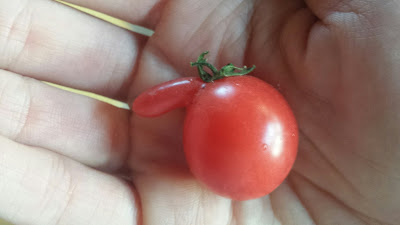After clearing the snow off this garden bed cover, I realized that it was frozen shut. Fortunately there was a bit of a gap and I was able to pry it open with a pitchfork. I'll need to work on wintertime accessibility of all my garden frames. I'm thinking about a .5x3" gap where the lid meets the frame, for sticking a bar in to pry things loose. It could be covered with a flap of plastic to help keep the cold out.
Once opened, I was happy to push aside some leaf mulch and dig up some crispy, bright orange carrots. Seeing the soil under the leaves was a bonus; it's a sight I miss during these cold, short, frozen days.
My Dad has been keeping winter carrots in the ground for years in British Columbia in a similar climate, but I always thought I had too many interested animals to get away with it. However I finally learned to mound my carrots to keep the slugs off them -- a few handfuls of sand or soil at a strategic point when the carrot tubers start to show -- and this year, that prevented most of the damage we would normally see. In addition, there have been no gophers since installing large wood beneath the ground... something tells me that they don't enjoying burrowing through wood! Just another fringe benefit of hugelkultur.
For those who have been following this blog, these carrots are growing in "Bill's bed," featured in Frames for Food and Summertime Bounty, earlier this year. This bed has come a long way since last April, and produced tomatoes, sweet peppers, paprika peppers, Swiss chard, celery, radishes, chives, and kohlrabi this year. (And catnip. Way, way, way more catnip than I could ever use.) The Swiss chard, above left, was hard hit by cold temps, but will be ready to grow with the first signs of spring. As the days start getting longer again, I can feel myself leaning toward spring when this bed will flourish again.
Happy Solstice!





























































